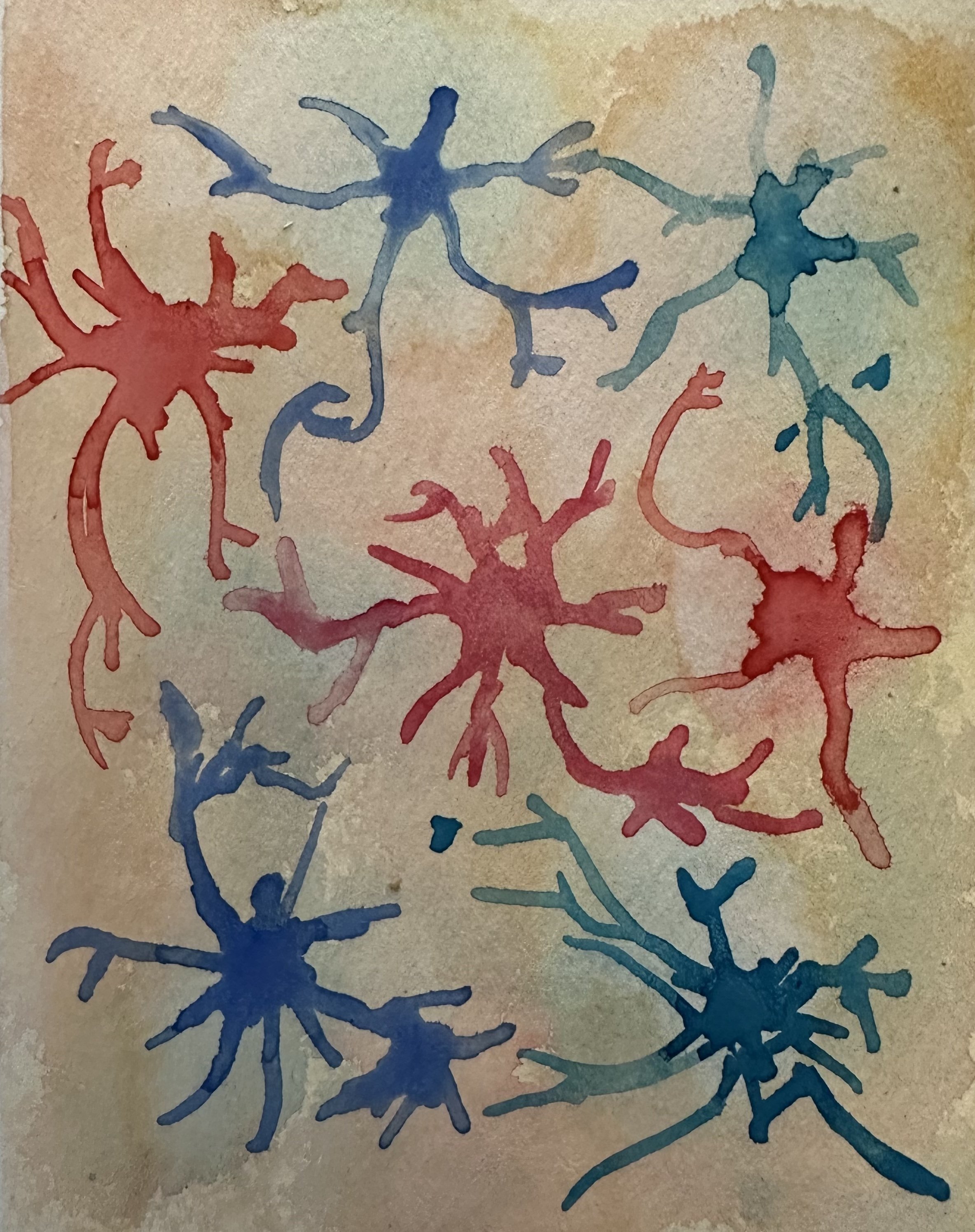One of the core tenets of good health in Traditional Chinese Medicine can be called adaptive capacity, which refers to one’s ability to maintain or return to balance in the face of change—truly recognized as the only constant. When we are able to respond to changes, including seasonal and environmental, or stimuli such as toxins or incidents of stress, and then come back into balance, we are both more resilient and less susceptible to destabilization. While Chinese Medicine recognizes that our bodies have inherent regulatory mechanisms, its practical applications like acupuncture and herbalism, are built in as support for both strengthening these mechanisms and restoring balance in the face of dysregulation… because let’s face it: most of us living through these wild, modern times do need help in coming back to homeostasis.
The nervous system can be thought of as one of our body’s regulatory mechanisms and relies upon flexibility, or adaptive capacity, to maintain harmony. Comprised of the sympathetic (“fight or flight”) and the parasympathetic (“rest and digest”) states, the autonomic nervous system handles about 90 percent of the body’s involuntary functions, like breathing, digesting, heart beating, and multiple processes of elimination. We’re understanding more and more just how crucial it is to our overall health to be able to move between these two states, as well as the disproportionate amount of time many of us spend in the sympathetic, constantly activated by stressors related to climate anxiety, perpetual overstimulation, widespread political unrest, relentless productivity, and so much more.
The good news is that there are many practices for nervous system regulation that are simple, accessible, empowering, and effective. I share this compilation of my favorite practices with some of my patients and hope that one or more of these can help you drop into your body, connect with your innate resources, and practice your way into an enhanced sense of adaptability.
Breath Work: There are many different types but personally, I like resonant or coherence breathing, which really does wonders for calming the nervous system. This is probably my favorite form of nervous system regulation, and it’s the one I most frequently recommend to patients. Coherence breathing entails inhales and exhales of equal duration and enhances heart rate variability, which is a measure of the balance between the sympathetic and parasympathetic nervous system. Heart rate variability, or the ability to move flexibly between these two states in response to stimuli or circumstances, is a marker of good health (including in the form of adaptive capacity), and for many of us it takes practice. In a relaxed parasympathetic state, heart rate is slower and there’s a greater interval between beats – linked with calm and positive emotions, an ability to handle stress and perform physically, and even cardiovascular health.
Resources:
Apps – “Breathing Zone” on iPhone or “Kardia – Deep Breathing Relaxation” on Android. Both of these apps let you set your breathing rate; experiment to find the pace that is most relaxing to your body. If you're using Insight Timer, I recommend "5 Minute Cardiac Coherence – Stress, Anxiety & Sleep" guided meditation by Ellen Mouton.
On YouTube, you can find a short video here, and it’s really nice at times to play with visual accompaniment rather than audio directives. A patient who tried it recently shared that this very quickly brought her into a state of relaxation; she felt her overactive mind benefited from having two sensory inputs and points of focus.
Tapping (EFT): This is a very simple technique that you can practice almost anytime or anywhere, it entails tapping on specific acupuncture points. It’s a very unique approach in that acknowledging emotions, grievances, or “negative” states of mind while tapping is encouraged as a way to intentionally release them from the body. They even suggest you can complain while tapping! Some of us may appreciate how different this is from the widespread “fake it ‘til you make it” mentality that dominates so much of the wellness world and can make people feel like they’re gaslighting themselves. EFT really encourages us to become acquainted with what we’re feeling, promotes a sense of safety through that acknowledgement, and engages the body to promote release.
Resources:
You can follow The Tapping Solution on YouTube or Instagram for an introduction to tapping and videos on EFT for anxiety, fear, overwhelm, unlocking creativity, etc.
Local practitioner Noemi Sparks hosts both private sessions and very affordable 30-minute tapping circles on Zoom weekly. If joining others could be motivating, you can schedule here. Your first group session is free!
Body Scan: This type of meditation is a wonderful way to practice being in communication with the body, creating an intimate allyship whereby we begin to hear the subtle messages always being shared with us. According to psychologist and stress management expert Elizabeth Scott, “Sometimes you can be so caught up in your stress that you don't realize that the physical discomfort you're experiencing—such as headaches, back and shoulder pain, and tense muscles—is connected to your emotional state.” With regular practice, doing body scan meditations helps to “break the cycle of physical and psychological tension that can feed on itself,” she adds. It’s pretty amazing to intentionally hold space for our bodies in this way, and the sensations that can occur during a body scan meditation remind us of the power to shift and adapt that can come from the simple act of witnessing.
Resources:
There are so many options for this that you can find on Insight Timer as it's a popular meditation modality, but one of my favorites of a moderate length is "Deep Healing" by David Ji and it's 23 minutes long.
Vagus Nerve Stimulation: The vagus nerve is a crucial part of the parasympathetic nervous system and supports a healthy stress response by restoring us to a calm state when a threat is no longer present. It is essentially an innate down-regulating mechanism, but it can sort of freeze when the nervous system is dysregulated. We can help strengthen its optimal functioning and our ability to move flexibly from the sympathetic to the parasympathetic states through stimulation, signaling to our bodies that there is no threat present. Vagus nerve stimulation is yet another way we can cultivate the feeling of safety in our bodies and enhance our adaptive capacity by supporting our nervous system’s ability to self-regulate.
Resources:
Insight Timer "Voo" breathwork Technique for grounding by Amy Hartman (4 minutes). You can search "vagus nerve" in Insight Timer for more options that might resonate!
Breathe out while making the the sound hmmmmm.
Gargling with warm water.
Affirmations/Reprogramming Negative Thoughts: I would do this in addition to one of the other practices as this is less about nervous system regulation and more about rewiring negative thought patterns (which can influence the nervous system and one’s capacity for healthy stress response). Neuroplasticity, or the ability of the brain to adapt in response to new information or experiences, helps explain the effectiveness of affirmations and reminds us of our own power in creating change. Getting out of mental loops that aren’t self-serving and rewiring our neural pathways takes time; give it 4-6 weeks of regular practice for these thoughts to "stick."
Resources:
To find your affirmations, you can use the Insight Timer guided practice "Reprogram Negative Beliefs & Thinking: A Journaling Practice" by Carrie Suwal. You'll need a journal or paper and pen to do this exercise. Once you have your affirmations, you don't need to do the full guided practice each time; you can just practice saying them out loud to yourself for 5 minutes a day or a few times a day.
If you feel called, please do share if any of these practices help you feel more supported, regulated, and adaptive!

